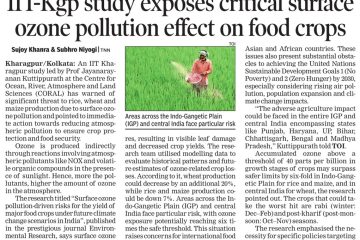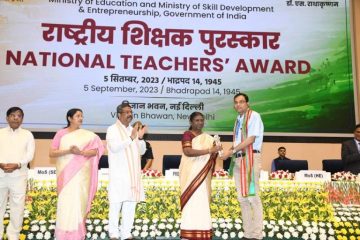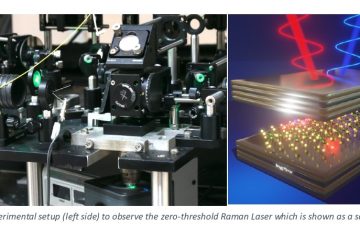- Contributor: Prof. Anandaroop Bhattacharya, Dept. of Mechanical Engineering, IIT Kharagpur

The last week of November saw sixteen eminent researchers from leading universities in France and India congregate at IIT Kharagpur to join four of our own colleagues with a common objective of knowledge sharing and what followed was three days of “fluid” interactions and “charged up” ideas among this “microcosm” of professionals from mechanical, chemical, electrical engineering, applied physics and medical science disciplines. This Indo-French workshop on “Recent Advances in ElectroHydroDynamics (EHD) – applications in microfluidics” was organized at IIT Kharagpur during 27-29 November 2019.
About ElectroHydroDynamics (EHD)

EHD, strictly speaking, is a scientific domain studying all the phenomena resulting from interactions between Electricity and Hydrodynamics and governed by Naviers-Stokes and Maxwell equations (neglecting any magnetic effects)[1]. With its fundamental and industrial applications, EHD becomes a truly multidisciplinary area that brings together research expertise from various fields including electrical engineering, physics, aerodynamics, materials, electrochemistry, biotechnology, geology, medical sciences and heat transfer.
The discovery of EHD phenomenon goes back to the days of Faraday. However, the advances in the field were rather slow for more than a century. The field got a boost in the seventies with the advances made in
- computer and numerical simulation techniques and
- new technologies for the realization of more and more complex
experiments.
Since the 1990s, with the advent of microsystems and microfluidics, EHD has witnessed a rapid rise in its developments both in fundamental studies and applications. Advances in electrostatics, electrospray, electrowetting, electrokinetics including electro-osmosis and electrothermal flows have subsequently come from numerous research groups across the world.
About the Workshop
 The Indo-French workshop at IIT Kharagpur brought together dynamic researchers working in different facets of EHD and/or in Microfluidics where they presented and shared their own research work with an objective to identify synergies and explore avenues for new innovations at the intersection of disciplines. The workshop was made possible through funding from the Indo-French Centre for the Promotion of Advanced Research (IFCPAR/CEFIPRA), a bilateral organisation set up by Government of India and Government of France to promote international collaborative research in advanced areas of Science &Technology.
The Indo-French workshop at IIT Kharagpur brought together dynamic researchers working in different facets of EHD and/or in Microfluidics where they presented and shared their own research work with an objective to identify synergies and explore avenues for new innovations at the intersection of disciplines. The workshop was made possible through funding from the Indo-French Centre for the Promotion of Advanced Research (IFCPAR/CEFIPRA), a bilateral organisation set up by Government of India and Government of France to promote international collaborative research in advanced areas of Science &Technology.
The first two days of the workshop witnessed technical presentations of the highest quality and encompassing the two broad themes of droplet dynamics and electro-kinetic flows and covering advances in fundamental understanding as well as applications in a multitude of domains including flow control, EHD pumping, micromixers, flow atomization, medical sciences, pollution control, electronic cooling and earth sciences.
Participants:
The workshop saw the participation of 11 researchers from 8 universities in France and included
| French Participants | |||
|
Universite de Poitiers
|
Prof. Hubert Romat | Université Paris Diderot | Prof. Phillpe Brunet |
| Prof. Christphe Louste | Universite de Grenoble | Prof. Hugues Bodiguel | |
| Prof. Phillipe Traore | Universite Nice | Prof. Harunori Yoshikawa | |
| ENS, Paris | Prof. Yong Chen | Universite de Bordeaux | Prof. Sakir Amiroudine |
| Participation from France through videoconferencing | |||
| Universite de Strasbourg | Prof. Laurence Joniaux | Ecole Centrale, Lyon | Prof. Marie Frenea-Robin |
| Universite de Grenoble | Prof. Chaoqui Misbah | ||
| Participants from Indian Universities | |||
| IIT Kanpur | Prof. Pradipta Panigrahi | IISC | Prof. Aloke Kumar |
| IIT Bombay | Prof. Rochish Thaokar |
IIT Delhi
|
Prof. Subhra Datta |
| IIT Gandhinagar | Prof. Uddipta Ghosh | Prof. Supreet Bahga | |
| IIT Hyderabad | Prof. Kirti Sahu | IIEST, Shibpur | Prof. Debashis Pal |
| Jadavpur University | Prof. Ranjan Ganguly | ||
| Participants from IIT Kharagpur | |||
| Prof. Suman Chakraborty | Prof. Anandaroop Bhattacharya | Prof. Aditya Bandopadhyay | Prof. Jeevanjyoti Chakraborty |
The highlight of the workshop were the informal interactive sessions and round table discussions among the researchers with the objective of exploring new ideas that can translate EHD from a multi-disciplinary area to a more transdisciplinary field with new innovations that can open up at the intersection of various disciplines. The final report out session saw the emergence of close to 15 such opportunities for collaborations between the researchers of India and France. Prof. Romat and Traore presented the different funding opportunities from IFCPAR, CNRS and ANR-DST[2]. It was proposed to give these ideas further maturity through continued interactions and once ready, pitch them for funding to various agencies.
Expert Views:
“Every presentation in the workshop was of the highest technical quality. This is as good as it can get” said Prof. Rochish Thaokar of IIT Bombay. “This was by far the best workshop I have attended and better than any conference. Apart from the absolutely state-of-the-art presentations, the informal ambiance and prolonged interactions were the biggest takeaways for me,” added Prof. Subhra Datta from IIT Delhi.
“The workshop was excellent and very successful, allowing us to learn from each other and to discuss the possibility of future collaboration,” said Prof. Yong Chen.
Christophe Louste: “A well-organized workshop with high-quality presentations that allowed to highlight the scientific excellence and complementarity of the Indian and French Teams. We expect this meeting to be the beginning of a fruitful collaboration.”
“I sincerely hope that through this workshop, we have sowed the seeds of several successful partnerships between Higher Education institutions of both countries,” said Anandaroop Bhattacharya, coordinator of the workshop from India.
“Yes, we must follow-up on the opportunities identified and translate them to concrete projects” added Prof. Romat, his counterpart from France.
References:
[1] https://en.wikipedia.org/wiki/Electrohydrodynamics
[2] http://www.cefipra.org/DST_ANR.aspx



